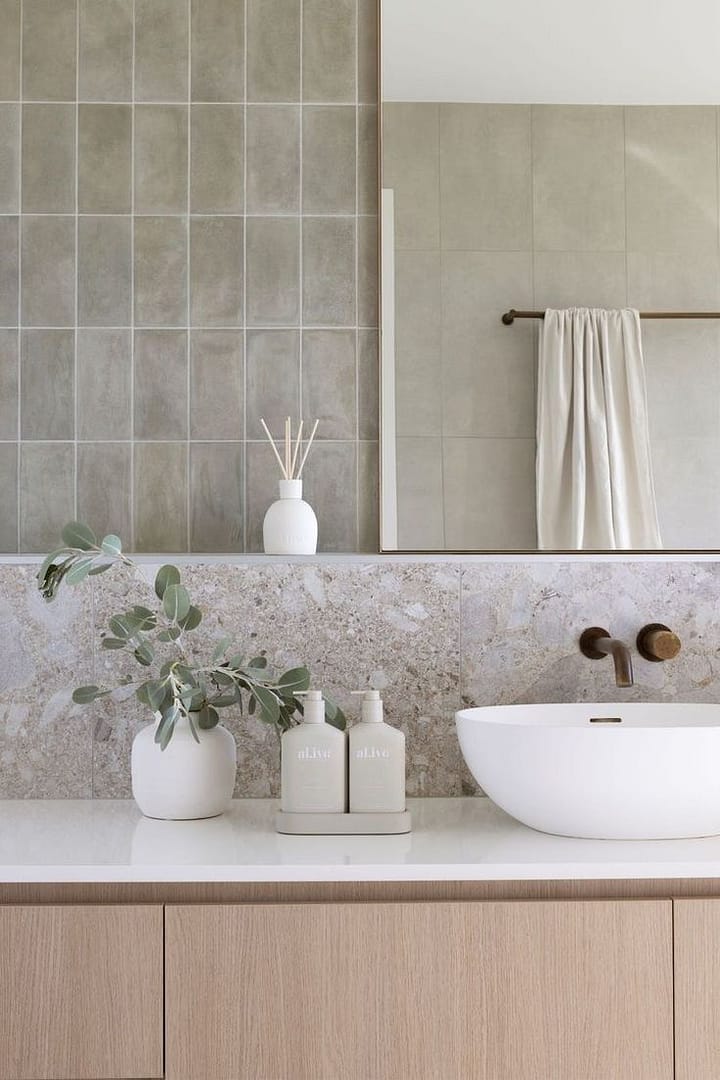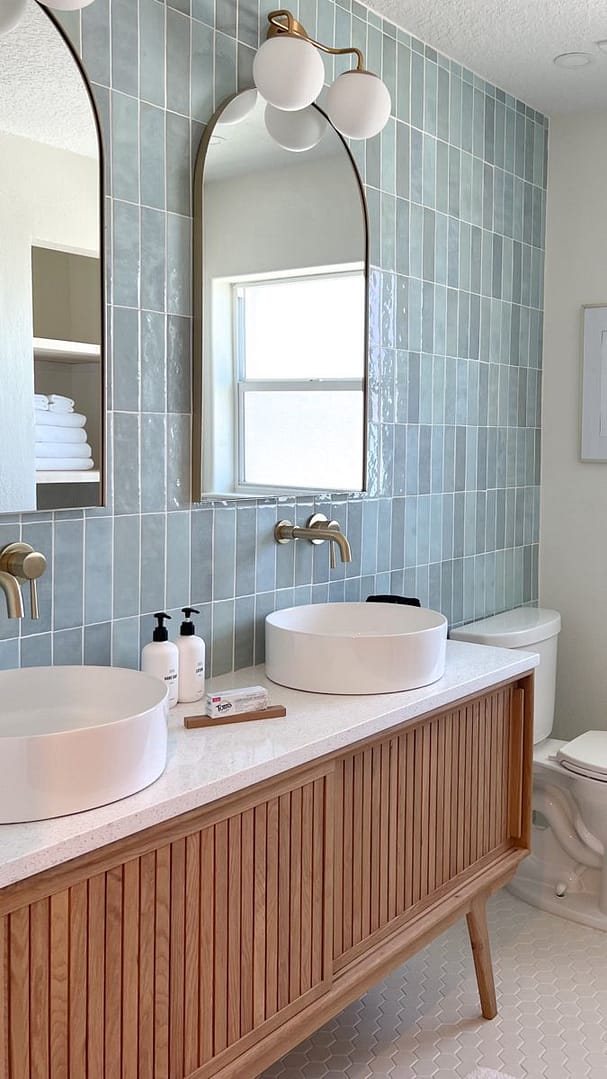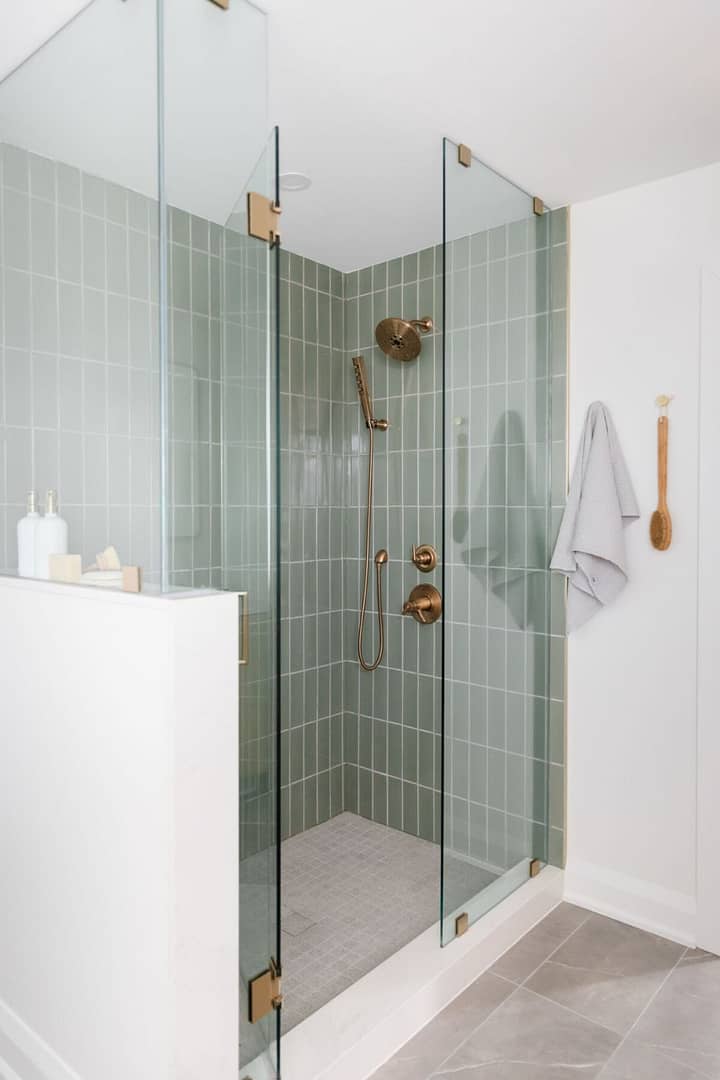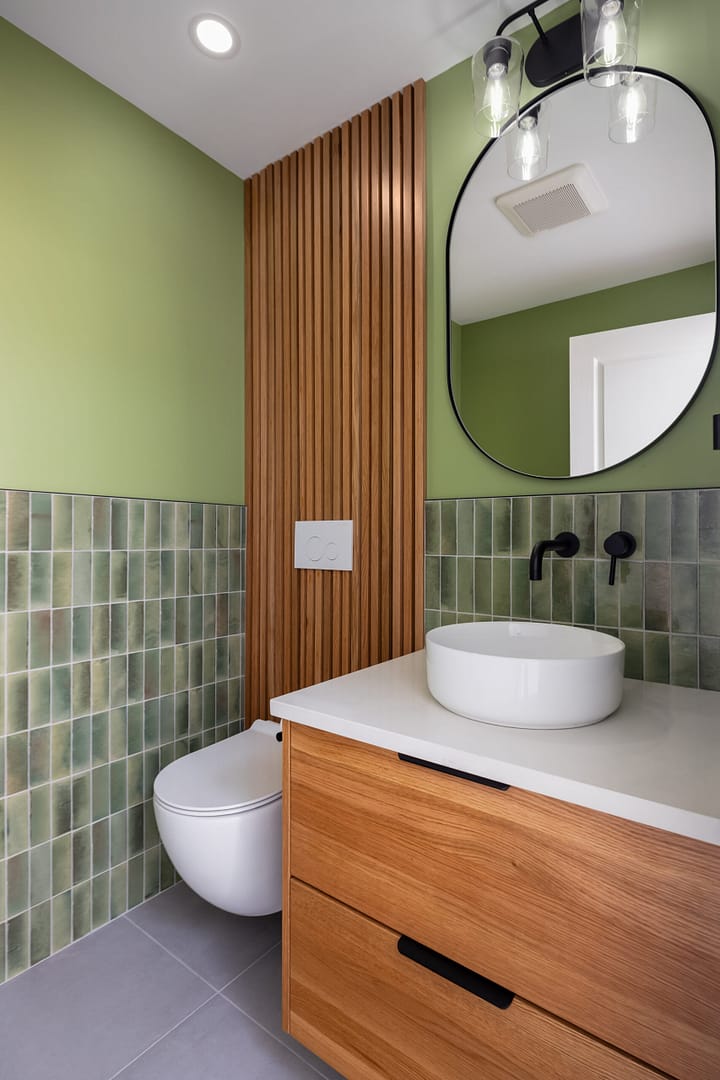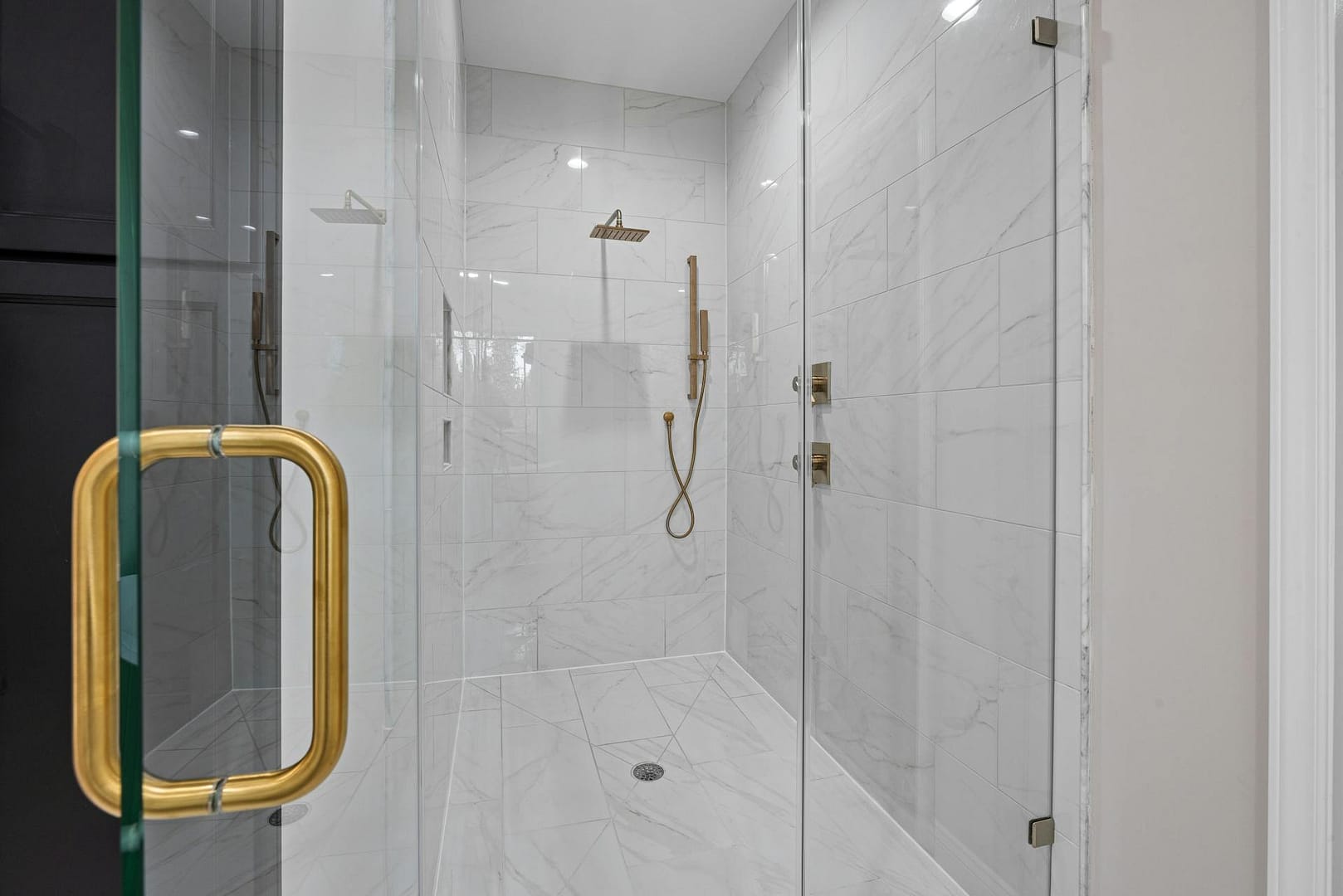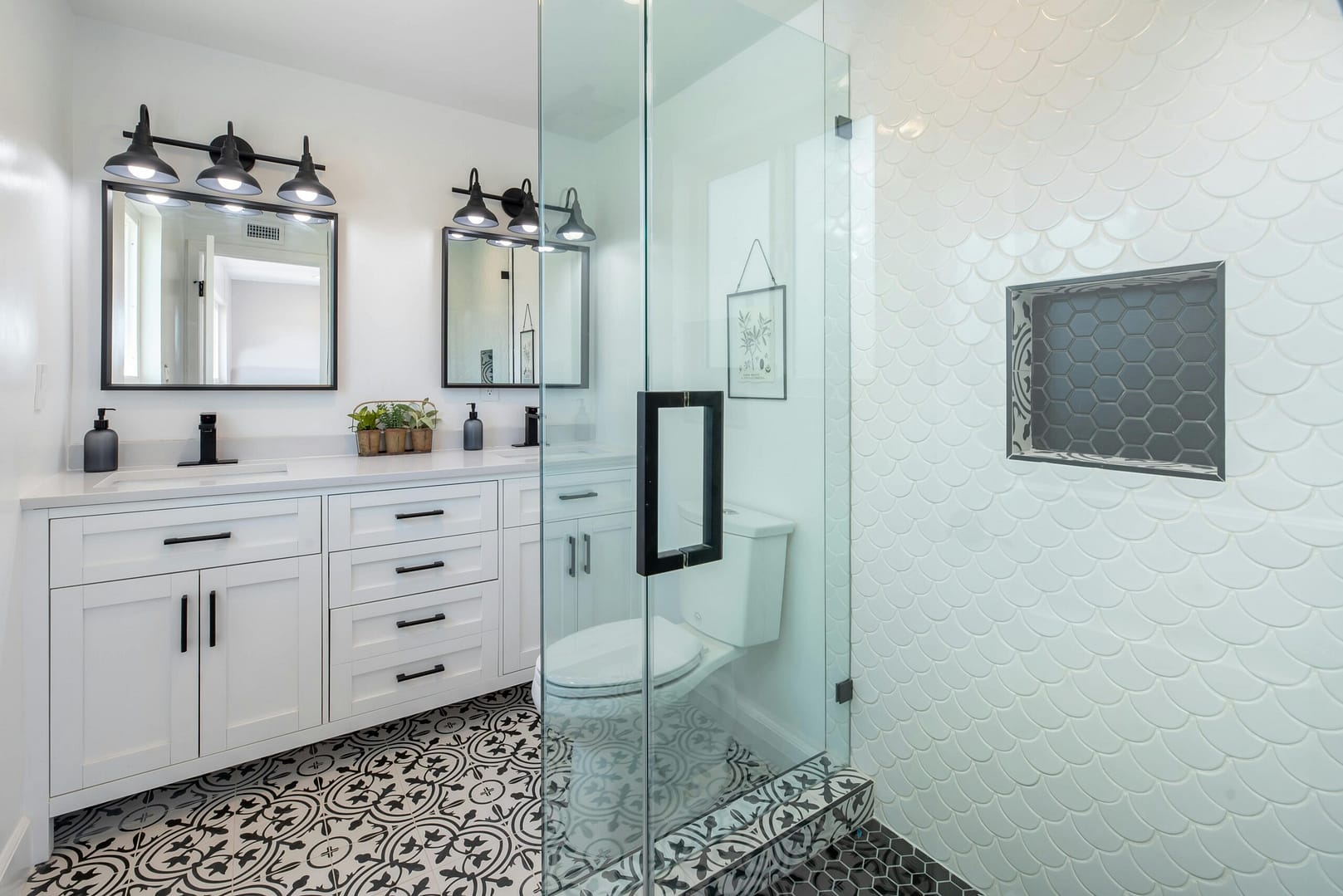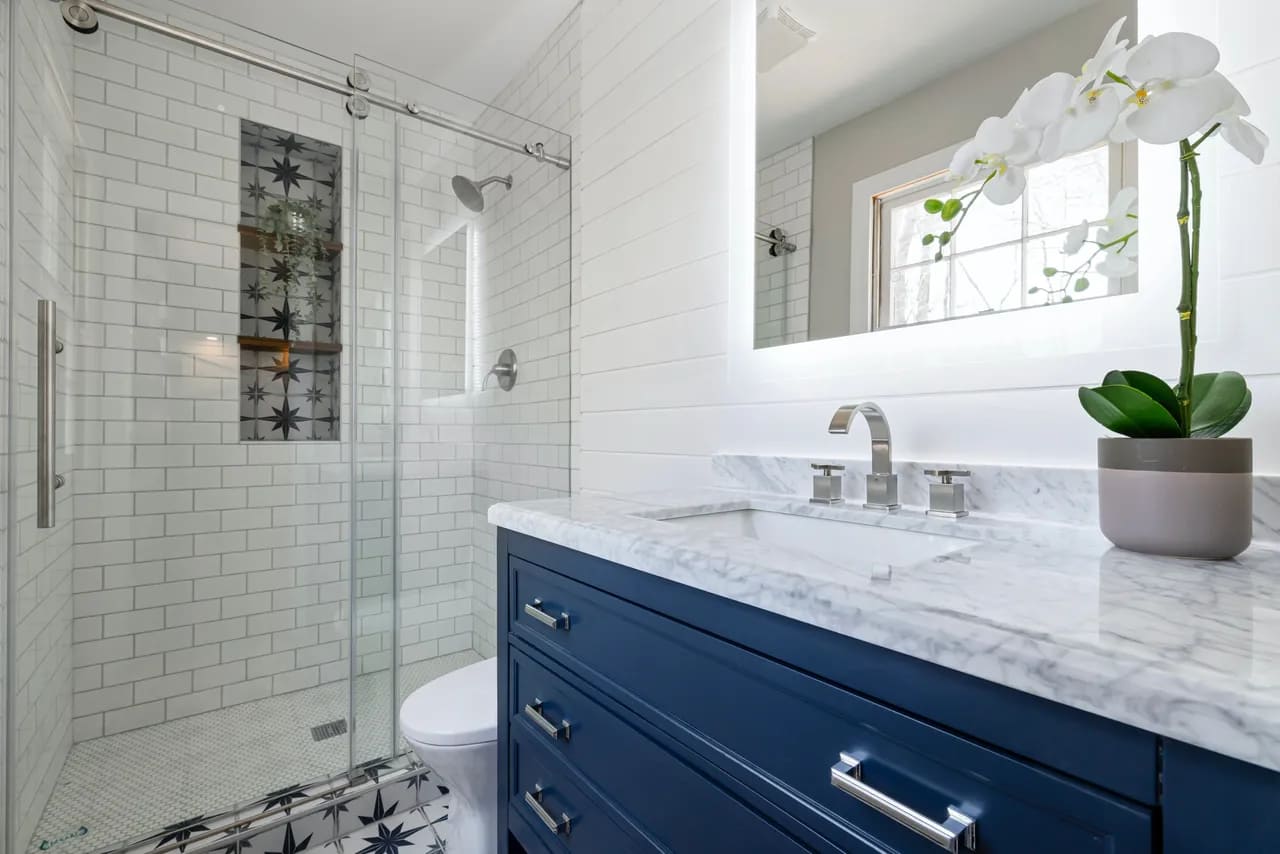- Bathroom
Vancouver Bathroom Renovation Guide: Expert Tips, Costs & Ideas
- By matin@quayconstruction.ca
Table of Contents
Planning a bathroom renovation in Vancouver? Whether you’re updating a small condo bathroom downtown or renovating a master ensuite in West Vancouver, this comprehensive guide will walk you through everything you need to know about bathroom renovations in Vancouver’s unique market and climate.
Planning Your Vancouver Bathroom Renovation
Initial Assessment
Current Bathroom Condition Evaluation
Before beginning any renovation project in Vancouver, a thorough assessment of your current bathroom’s condition is essential. This starts with a detailed inspection of all visible surfaces, including walls, floors, and fixtures. Look for signs of water damage, such as peeling paint, warped baseboards, or discolored grout lines. In Vancouver’s humid climate, these issues are particularly common and can indicate underlying problems that need addressing.
Pay special attention to the caulking around tubs, showers, and sinks, as deteriorated seals are often the first sign of water infiltration. Document any cracks in tiles or surfaces, as these could suggest structural issues or improper installation that will need to be addressed during the renovation.
Structural Assessment Requirements
Vancouver’s building codes require careful consideration of structural elements, particularly in older homes or condo buildings. A professional assessment should examine:
The floor joists beneath the bathroom to ensure they can support heavy fixtures like soaking tubs or stone tiles. This is particularly important in Vancouver’s many heritage homes, where floor structures may have weakened over time.
Wall strength and stability, especially if you’re planning to relocate fixtures or install wall-mounted features. Load-bearing walls must be identified and properly supported during any modifications.
The subfloor condition, checking for any signs of rot, water damage, or unevenness that could affect the new installation. Vancouver’s wet climate makes this particularly crucial, as water damage is more common here than in drier regions.
Plumbing System Inspection
A comprehensive plumbing inspection is crucial in Vancouver homes, where aging pipes and high water pressure can create unique challenges. Your assessment should include:
- Pipe Material and Condition: Many older Vancouver homes still have galvanized steel pipes, which may need replacement. Identify the type and age of your current plumbing system.
- Water Pressure Testing: Vancouver’s water pressure can vary significantly by neighborhood. Have a professional test your water pressure to ensure it meets current building code requirements and is appropriate for your planned fixtures.
- Drain Line Assessment: Examine the condition and layout of existing drain lines, including venting systems. Vancouver’s building code has specific requirements for bathroom ventilation and drainage that must be met.
- Water Supply Lines: Verify the condition and capacity of hot and cold water supply lines. Older homes may need upgrades to support modern fixtures like rainfall showerheads or body sprays.
Electrical System Review
Vancouver’s electrical codes are stringent, particularly regarding bathroom safety. A thorough electrical assessment should cover:
Ground Fault Circuit Interrupter (GFCI) Protection: All bathroom electrical outlets must have GFCI protection according to Vancouver building codes. Verify existing outlets and plan for any additional ones needed.
Lighting Assessment: Evaluate current lighting fixtures and wiring, considering both task and ambient lighting needs. Vancouver’s often overcast weather makes proper bathroom lighting particularly important.
Ventilation Fan Wiring: Check the existing fan’s wiring and capacity. Vancouver’s building code requires specific ventilation standards to manage humidity and prevent mold growth.
Circuit Capacity: Assess whether your electrical panel can support any additional loads from new features like heated floors or luxury shower systems. Many older Vancouver homes may need electrical upgrades to accommodate modern bathroom amenities.
Ventilation Assessment
In Vancouver’s humid climate, proper ventilation is crucial for preventing mold and maintaining air quality. Your ventilation assessment should include:
Fan Capacity Evaluation: Calculate the bathroom’s square footage to determine the required fan capacity (measured in cubic feet per minute or CFM). Vancouver building code requires a minimum ventilation rate based on bathroom size.
Exhaust Routing: Inspect how the current ventilation system is routed to the exterior. Ensure it meets Vancouver’s building code requirements for proper termination points and doesn’t vent into attic spaces.
Humidity Control Features: Assess the need for additional humidity control measures such as programmable ventilation fans or dehumidification systems, which are particularly important in Vancouver’s climate.
Air Quality Considerations: Evaluate the current air exchange rate and consider options for improving air quality, such as humidity-sensing fans or timed ventilation systems.
Moisture and Waterproofing Inspection
Given Vancouver’s wet climate, a detailed moisture assessment is critical:
Current Waterproofing Systems: Evaluate the condition and effectiveness of existing waterproofing membranes and vapor barriers.
Moisture Testing: Conduct moisture readings in walls and floors around wet areas to identify any existing water infiltration issues.
Window Assessment: If your bathroom has windows, inspect their condition, sealing, and waterproofing, as Vancouver’s frequent rain can make windows a common source of water ingress.
Space Planning
Standard Vancouver Bathroom Dimensions
Understanding typical bathroom dimensions in Vancouver homes is crucial for effective renovation planning. Different property types have distinct spatial considerations:
Vancouver Condos and Apartments
- Main Bathrooms: Typically range from 40-60 square feet (5′ x 8′ to 6′ x 10′)
- Ensuite Bathrooms: Usually 60-80 square feet (6′ x 10′ to 8′ x 10′)
- Powder Rooms: Commonly 15-25 square feet (3′ x 5′ to 5′ x 5′)
These dimensions are particularly relevant in Vancouver’s dense urban areas, where space optimization is crucial. New construction condos often feature slightly larger bathrooms, but renovators working in older buildings may need to work within more confined spaces.
Single-Family Homes
- Main Bathrooms: Generally 70-100 square feet (7′ x 10′ to 8′ x 12′)
- Master Ensuites: Can range from 100-200 square feet (10′ x 10′ to 10′ x 20′)
- Powder Rooms: Usually 20-30 square feet (4′ x 5′ to 5′ x 6′)
Vancouver’s heritage homes may have unique dimensions that don’t conform to these standards, requiring creative space planning solutions.
Layout Optimization Techniques
Functional Zoning
Create distinct zones within your bathroom to maximize functionality:
- Wet Zone
- Shower/tub area with proper waterproofing
- Minimum clearance of 30″ x 30″ for shower stalls
- Consider glass enclosures to maintain visual spaciousness
- Strategic placement to minimize water splash areas
- Grooming Zone
- Vanity area with adequate counter space (minimum 36″ width recommended)
- Mirror placement for optimal lighting
- Electrical outlet positioning following Vancouver electrical code
- Storage integration within arm’s reach
- Toilet Zone
- Minimum 30″ width clearance
- 24″ clear space in front of toilet
- Privacy considerations in larger bathrooms
- Proper ventilation placement
Traffic Flow Optimization
Understanding movement patterns is crucial for comfortable bathroom use:
- Door Swing Considerations
- Ensure doors don’t conflict with fixtures
- Consider pocket doors for tight spaces
- Maintain minimum 32″ clear door opening
- Plan emergency access requirements
- Circulation Space
- Minimum 30″ clearance in front of fixtures
- 60″ turning radius for accessible bathrooms
- Clear path between primary fixtures
- Emergency egress considerations
Storage Solutions for Different Bathroom Sizes
Small Bathroom Solutions (Under 50 sq ft)
Maximize vertical space and utilize clever storage solutions:
- Wall-Mounted Options
- Floating vanities to maintain floor visibility
- Vertical cabinet columns (12-18″ wide)
- Over-toilet storage units (consider earthquake safety)
- Recessed medicine cabinets (minimum 4″ depth)
- Hidden Storage
- Pull-out organizers in vanity cabinets
- Toe-kick drawers under vanities
- Behind-mirror storage solutions
- Shower niches for toiletries
Medium Bathroom Solutions (50-100 sq ft)
Balance open space with storage needs:
- Built-in Features
- Linen closets (minimum 24″ depth)
- Double vanities with shared storage
- Combination of open and closed storage
- Custom storage solutions for specific needs
- Organizational Systems
- Drawer organizers and dividers
- Pull-out hamper integration
- Electrical outlet drawer solutions
- Heated towel storage options
Large Bathroom Solutions (Over 100 sq ft)
Create dedicated storage zones:
- Luxury Storage Options
- Walk-in closet integration
- Dressing area storage
- Separate vanity areas
- Spa product storage solutions
- Multi-functional Storage
- Seating with storage
- Display shelving for decorative items
- Separate his/her storage areas
- Climate-controlled cabinet options
Accessibility Requirements
Universal Design Principles
Incorporate accessibility features that benefit all users:
- Clearance Requirements
- 60″ turning radius in main area
- 30″ x 48″ clear floor space at fixtures
- 32″ minimum door width
- Barrier-free shower entry
- Fixture Heights and Reach Ranges
- Vanity height: 32-34″ from floor
- Toilet height: 17-19″ from floor
- Grab bar installation zones
- Accessible storage within 15-48″ reach range
Future-Proofing Considerations
Plan for aging-in-place and changing needs:
- Structural Support
- Wall reinforcement for future grab bars
- Shower bench support preparation
- Adaptable vanity configurations
- Removable cabinet bases
- Safety Features
- Non-slip flooring options
- Adequate lighting design
- Easy-operate fixtures and controls
- Emergency alert system preparation
Space-Saving Innovations
Compact Fixtures
Utilize space-efficient options:
- Modern Solutions
- Wall-hung toilets with concealed tanks
- Corner sinks and vanities
- Sliding shower doors
- Compact soaking tubs
- Multi-functional Elements
- Mirror/storage combinations
- Vanity/laundry integrations
- Shower/tub combinations
- Toilet/bidet combinations
Visual Space Enhancement
Create the illusion of larger space:
- Design Techniques
- Consistent flooring throughout
- Large-format tiles
- Strategic mirror placement
- Glass shower enclosures
- Lighting Strategies
- Layered lighting design
- Under-cabinet lighting
- Backlit mirrors
- Natural light maximization
Vancouver-Specific Considerations
Climate Adaptations
Design for Vancouver’s wet climate:
- Moisture Management
- Enhanced ventilation systems
- Waterproofing considerations
- Humidity-resistant materials
- Heated floor zones
- Natural Light
- Window placement optimization
- Privacy solutions for windows
- Light wells and skylights
- UV protection measures
Building Code Compliance
Adhere to local regulations:
- Ventilation Requirements
- Mechanical ventilation sizing
- Steam management
- Air exchange rates
- Humidity control systems
- Structural Considerations
- Seismic requirements
- Floor load calculations
- Waterproofing standards
- Fire separation requirements
Setting Project Goals
Determining Primary Renovation Objectives
Functionality Improvements
- Daily Use Considerations
- Number of household members
- Peak usage times
- Specific user needs (elderly, children, mobility requirements)
- Storage requirements
- Morning routine optimization
- Specific Functional Goals
- Double sink installation for shared use
- Improved shower/bath configuration
- Enhanced storage capacity
- Better ventilation system
- Increased counter space
- Accessibility Requirements
- Current mobility needs
- Future aging-in-place considerations
- Universal design principles
- Safety feature integration
- Emergency access
Creating a Realistic Vision
Style and Aesthetics
- Design Direction
- Contemporary minimalist
- Traditional classic
- Modern farmhouse
- Industrial chic
- Spa-inspired retreat
- Color Schemes
- Primary palette selection
- Accent color choices
- Material color coordination
- Lighting impact considerations
- Long-term style sustainability
- Material Preferences
- Tile selections (floor, wall, shower)
- Countertop materials
- Cabinet finishes
- Fixture styles
- Hardware choices
Budget Alignment
- Investment Considerations
- Property value
- Neighborhood standards
- Return on investment
- Long-term residence plans
- Financial constraints
- Priority Setting
- Must-have features
- Nice-to-have elements
- Future additions possibility
- Quality vs. cost balance
- Long-term value considerations
Identifying Must-Have Features
Essential Elements
- Safety Features
- Non-slip flooring
- Proper lighting
- GFCI protection
- Grab bar installation
- Emergency access
- Comfort Requirements
- Adequate ventilation
- Temperature control
- Proper lighting levels
- Sound insulation
- Moisture management
- Storage Solutions
- Daily essentials access
- Towel storage
- Cleaning supply storage
- Medicine storage
- Cosmetic organization
Luxury Additions
- Comfort Upgrades
- Heated flooring
- Steam shower capability
- Smart toilet features
- Built-in sound system
- Chromotherapy lighting
- Technology Integration
- Smart mirrors
- Digital shower controls
- Automated ventilation
- LED lighting systems
- Water temperature control
Planning for Future Needs
Long-Term Considerations
- Family Changes
- Growing family needs
- Aging considerations
- Accessibility requirements
- Multi-generational use
- Resale value
- Technology Adaptation
- Future tech integration
- Smart home compatibility
- Energy management systems
- Water conservation features
- Lighting control systems
- Maintenance Planning
- Material durability
- Cleaning requirements
- Replacement schedules
- Update possibilities
- Repair access
Energy Efficiency Considerations
Water Conservation
- Fixture Selection
- Low-flow faucets
- Dual-flush toilets
- Water-efficient showerheads
- Leak detection systems
- Pressure-balanced valves
- Usage Optimization
- Grey water systems
- Water heating efficiency
- Flow rate management
- Temperature control
- Usage monitoring
Power Management
- Lighting Efficiency
- LED fixture selection
- Natural light optimization
- Motion sensors
- Dimmer controls
- Timer integration
- Ventilation Efficiency
- Energy-efficient fans
- Heat recovery systems
- Humidity sensors
- Timer controls
- Smart ventilation
Timeline Development
Project Scheduling
- Critical Path Items
- Permit acquisition
- Material delivery
- Contractor availability
- Building access
- Service interruptions
- Milestone Planning
- Design approval
- Demo completion
- Rough-in inspection
- Tile installation
- Final inspection
- Contingency Planning
- Weather considerations
- Material delays
- Trade coordination
- Alternative bathroom access
- Emergency procedures
Costs and Budgeting
Average Vancouver Renovation Costs (2025)
- Basic renovation: $12,000 – $20,000
- Mid-range renovation: $20,000 – $35,000
- High-end renovation: $35,000 – $75,000+
Cost Breakdown
- Labor (40-50% of budget)
- Materials (30-40% of budget)
- Permits and documentation (5-10%)
- Contingency fund (10-20%)
Cost Factors Specific to Vancouver
- Higher material costs due to import duties
- Premium labor rates in metropolitan areas
- Strata requirements in condos
- Seismic considerations
- Water efficiency requirements
Vancouver Building Permits and Regulations
Permits
- Building permits
- Plumbing permits
- Electrical permits
- Special requirements for heritage homes
Building Code Requirements
- Vancouver-specific building codes
- Ventilation requirements
- Waterproofing standards
- Energy efficiency requirements
- Accessibility standards
Strata Considerations
- Approval process
- Insurance requirements
- Working hour restrictions
- Contractor insurance needs
- Material restrictions
Design Trends in Vancouver
Popular Vancouver Styles
- West Coast Contemporary
- Modern Minimalist
- Heritage-inspired
- Eco-conscious design
- Asian-influenced aesthetics
Current Trends (2024)
- Spa-inspired bathrooms
- Natural materials
- Smart bathroom technology
- Water-saving fixtures
- Heated flooring systems
Vancouver-Specific Considerations
- Humidity management
- Natural light optimization
- Space-saving solutions
- Rain-ready design features
- Energy-efficient lighting
Choosing Materials
Flooring Options
- Porcelain tiles
- Luxury vinyl
- Natural stone
- Heated floor systems
- Non-slip surfaces
Wall Treatments
- Moisture-resistant drywall
- Tile options
- Waterproofing membranes
- Mold-resistant materials
- Decorative panels
Fixtures and Fittings
- Water-efficient toilets
- Low-flow faucets
- Shower systems
- Vanities
- Storage solutions
Vancouver-Specific Material Considerations
- Humidity-resistant options
- Local supplier availability
- Eco-friendly materials
- Weather-appropriate choices
- Maintenance requirements
Hiring Contractors in Vancouver
Finding Qualified Professionals
- Licensed contractor requirements
- Insurance verification
- References and portfolios
- Local experience importance
- Professional associations
Vetting Process
- Checking credentials
- Reading reviews
- Requesting detailed quotes
- Comparing proposals
- Verifying insurance
Contract Essentials
- Scope of work
- Timeline specifications
- Payment schedule
- Warranty information
- Dispute resolution
DIY vs. Professional Installation
What You Can DIY
Simple Cosmetic Upgrades
Updating shower curtains, adding new decor elements, or installing a fresh mirror can give your bathroom an instant facelift. These surface-level changes require minimal tools and basic DIY skills.
Painting
A fresh coat of paint on walls or cabinets can dramatically transform your bathroom’s appearance. Choose moisture-resistant paint specifically designed for bathroom environments and ensure proper ventilation during application.
Hardware Replacement
Swapping out old towel bars, toilet paper holders, and cabinet handles is a straightforward DIY project that can modernize your space. Most hardware comes with installation templates and requires only basic tools.
When to Hire Professionals
Plumbing Modifications
Any changes to water lines, drain locations, or fixture relocations require licensed plumbers to ensure proper installation and prevent leaks. Professional plumbers understand Vancouver’s specific plumbing codes and can properly size pipes for optimal water pressure.
Electrical Work
Licensed electricians must handle all electrical modifications, including lighting upgrades and outlet installations. This ensures compliance with Vancouver electrical codes and proper GFCI protection in wet areas.
Structural Changes
Moving walls, expanding the space, or relocating fixtures requires professional expertise to maintain your home’s structural integrity. A contractor can assess load-bearing elements and ensure proper support during modifications.
Complex Waterproofing
Professional installation of shower pans, tile surrounds, and moisture barriers is crucial to prevent water damage. Proper waterproofing techniques require specific materials and expertise to ensure long-lasting protection.
Permit-Required Work
Major renovations in Vancouver typically require building permits and professional contractors who understand local regulations. Licensed professionals can navigate the permit process and ensure work meets all code requirements.
Safety Considerations
Asbestos in Older Homes
Vancouver homes built before 1990 may contain asbestos in flooring, walls, or ceiling materials. Professional testing and certified asbestos removal is essential before beginning any renovation work.
Electrical Safety
Bathroom electrical systems require specific safety features like GFCI outlets and proper grounding. Professional installation ensures protection against electrical hazards in wet environments.
Waterproofing Requirements
Proper moisture barriers and waterproofing methods must meet Vancouver building codes to prevent water damage. Professional installation ensures appropriate materials and techniques are used to protect surrounding structures.
Ventilation Needs
Adequate ventilation is crucial to prevent mold growth and maintain air quality. A professional can properly size and install ventilation systems that meet local building requirements.
Structural Integrity
Professional assessment is necessary to identify any existing water damage or structural issues before renovation begins. This ensures modifications won’t compromise your home’s stability and safety.
Timeline and Project Management
Typical Project Timeline
- Planning: 2-4 weeks
- Permits: 2-6 weeks
- Demolition: 1-2 days
- Construction: 7-14 days
- Finishing: 1-2 days
Project Management Tips
Creating a detailed schedule: Break down your bathroom renovation into specific tasks with realistic timeframes, including buffer days for unexpected issues common in Vancouver’s busy construction market.
Coordinating contractors: Maintain clear communication channels with all trades and ensure each understands their role and timing, especially important given the high demand for skilled contractors in Vancouver.
Managing deliveries: Schedule deliveries to arrive just before they’re needed while considering storage limitations in Vancouver’s compact living spaces.
Quality control: Conduct daily inspections and address issues immediately to maintain Vancouver’s high construction standards.
Progress tracking: Document each phase with photos and maintain a detailed log of completed work to ensure your renovation stays on track and on budget.
Common Delays
Permit processing: Vancouver bathroom renovation permits typically take 2-4 weeks, though processing times can vary based on application volume and complexity.
Material availability: Supply chain issues can affect material availability, especially for imported fixtures and specialized items.
Weather impacts: Vancouver’s rainy season can affect renovations involving external walls or ventilation work.
Contractor scheduling: High demand for qualified contractors in Vancouver’s market can lead to scheduling conflicts and timeline adjustments.
Unexpected issues: Hidden water damage or outdated plumbing, common in Vancouver’s older homes, can extend project timelines when discovered.
Common Challenges
Vancouver-Specific Issues
Vancouver’s notorious rainfall patterns can significantly impact bathroom renovation timelines, particularly during the winter months when exterior work or material delivery might be affected. The city’s weather patterns require careful planning and flexibility in project scheduling, especially when coordinating with contractors and material deliveries.
Strata approval processes and heritage building requirements present unique challenges in Vancouver’s diverse architectural landscape. Many multi-unit buildings require detailed documentation and multiple review stages for even minor bathroom modifications, while historical properties must maintain specific architectural elements while integrating modern amenities. These requirements often extend project timelines and necessitate specialized expertise.
Material shipping delays and labor availability add another layer of complexity to Vancouver bathroom renovations. Eco-friendly products often come from specialized suppliers, requiring longer lead times and careful inventory management. Meanwhile, the city’s competitive construction market means skilled contractors, particularly those experienced in eco-friendly installations, are frequently booked months in advance.
Problem Prevention
Thorough planning is the cornerstone of successful bathroom renovations in Vancouver, requiring careful attention to local building codes and environmental considerations. Initial planning should include detailed timelines, material sourcing strategies, and contingency plans that account for Vancouver’s unique challenges.
Proper waterproofing and ventilation are crucial elements in Vancouver’s wet climate. Specific moisture barriers and waterproof membranes must be selected to handle the region’s high humidity levels, while ventilation systems need careful design to prevent mold growth and maintain air quality, particularly in smaller Vancouver condos where space is at a premium.
Quality materials and expert installation form the final pillars of problem prevention. Eco-friendly materials must be chosen not only for their sustainability credentials but also for their ability to withstand Vancouver’s unique climate conditions. Installation by professionals familiar with local building practices ensures long-term durability and compliance with Vancouver’s stringent building codes.
Solution Strategies
Contingency planning and alternative materials selection are essential strategies for successful eco-friendly bathroom renovations in Vancouver. Strong contingency plans should account for seasonal weather patterns and potential approval delays, while material alternatives should focus on locally sourced eco-friendly products to minimize shipping delays and carbon footprint.
Flexible scheduling and professional consultation provide the framework for smooth project execution. Building buffer periods into project timelines helps navigate Vancouver’s unpredictable weather and labor market, while local experts can provide invaluable insights into handling heritage properties or strata requirements.
Regular communication serves as the backbone of successful renovation projects. Maintaining open dialogue between homeowners, contractors, and strata councils (where applicable) helps maintain project momentum and ensures all parties remain aligned on eco-friendly goals and timeline expectations. This communication becomes particularly crucial when dealing with delays or necessary modifications to the original plan.
Eco-Friendly Options
Sustainable Materials
A thoughtful Vancouver bathroom renovation starts with choosing environmentally responsible materials. Recycled content tiles, made from post-consumer glass and ceramic waste, offer stunning designs while reducing landfill impact. When selecting finishes, opt for low-VOC paints, sealants, and adhesives to maintain healthy indoor air quality during and after renovation. Sustainable wood products, such as FSC-certified cabinets and bamboo vanities, ensure your materials come from responsibly managed forests. Supporting local material suppliers not only reduces transportation emissions but also strengthens the Vancouver economy. Complete your eco-conscious design with eco-friendly insulation options like recycled denim or sheep’s wool, which provide excellent thermal protection while using renewable resources.
Water Conservation
Water-wise fixtures are crucial for an environmentally responsible Vancouver bathroom renovation. Begin with dual-flush toilets that offer different flush volumes for liquid and solid waste, potentially saving thousands of gallons annually. Install low-flow faucets with aerators that maintain pressure while reducing water usage by up to 30%. Water-efficient showerheads with WaterSense certification deliver a satisfying shower experience while using no more than 2.0 gallons per minute. Consider implementing a greywater system that recycles sink and shower water for toilet flushing and garden irrigation. Modern leak detection technology using smart sensors can alert you to potential problems before they become costly water-wasting disasters.
Energy Efficiency
Your Vancouver bathroom renovation can significantly reduce energy consumption through strategic upgrades. Replace outdated fixtures with LED lighting that provides bright, natural-looking illumination while using a fraction of the energy. Install heat recovery ventilation systems that capture warmth from exhaust air to preheat incoming fresh air, reducing heating costs. Energy-efficient fans with humidity sensors operate automatically to prevent moisture issues while minimizing power usage. Integrate smart controls that allow you to program lighting, ventilation, and heating schedules, or automatically adjust based on occupancy, maximizing energy savings without sacrificing comfort.
Maintenance and Care
Daily Maintenance
Ventilation Practices
- Morning Routine
- Run fan during showers (minimum 20 minutes after)
- Open windows when weather permits
- Wipe down shower walls after use
- Leave shower door/curtain open
- Use squeegee on glass surfaces
- Evening Checks
- Ensure fan is off when not needed
- Check for standing water
- Dry any wet surfaces
- Empty dehumidifier if used
- Check for drips or leaks
- Humidity Control
- Monitor humidity levels (ideal 40-50%)
- Use portable dehumidifier when needed
- Check condensation on windows
- Maintain room temperature
- Address seasonal variations
Cleaning Routines
- Daily Tasks
- Wipe countertops and sinks
- Clean toilet bowl and seat
- Dry shower areas
- Empty trash
- Check/replace toilet paper
- Surface-Specific Care Countertops
- Use appropriate cleaners for material
- Avoid abrasive products
- Clean spills immediately
- Protect from cosmetic stains
- Use cutting boards/mats
Fixtures
- Wipe with soft cloth
- Remove water spots
- Clean aerators monthly
- Check for mineral buildup
- Use manufacturer-recommended products
Glass/Mirrors
- Use streak-free cleaners
- Avoid ammonia on special coatings
- Clean frames and tracks
- Check seals
- Remove toothpaste spots
Moisture Control
- Prevention Measures
- Use shower curtain liners
- Maintain caulk lines
- Check drain function
- Monitor pipe condensation
- Inspect window seals
- Problem Areas
- Corner joints
- Window sills
- Door frames
- Fixture bases
- Grout lines
Long-term Care
Annual Inspections
- Professional Checks
- Plumbing system review
- Electrical safety inspection
- Ventilation efficiency test
- Waterproofing assessment
- Structural evaluation
- DIY Inspections
- Check all caulking
- Inspect grout condition
- Test GFCI outlets
- Verify fan operation
- Check cabinet hardware
- Documentation
- Maintenance log
- Repair history
- Product warranties
- Service contacts
- Emergency procedures
Grout Maintenance
- Regular Care
- Weekly cleaning
- pH-balanced cleaners
- Soft brush scrubbing
- Immediate stain treatment
- Proper drying
- Annual Tasks
- Professional deep cleaning
- Sealer application
- Color restoration
- Crack repair
- Mold prevention
- Problem Prevention
- Use proper cleaning products
- Avoid bleach-based cleaners
- Maintain proper ventilation
- Address discoloration early
- Monitor for cracks
Sealant Replacement
- Inspection Schedule
- Check every 3 months
- Look for discoloration
- Monitor for separation
- Test water beading
- Check flexibility
- Replacement Process
- Remove old caulk completely
- Clean surfaces thoroughly
- Allow complete drying
- Use quality materials
- Apply proper technique
- Priority Areas
- Shower/tub joints
- Sink perimeters
- Toilet base
- Window frames
- Counter backsplash
Hardware Upkeep
- Regular Maintenance
- Tighten loose screws
- Clean drawer slides
- Lubricate hinges
- Adjust door alignment
- Check handle security
- Preventive Care
- Clean with appropriate products
- Avoid harsh chemicals
- Address corrosion early
- Maintain proper humidity
- Regular inspections
- Common Issues
- Loose handles
- Squeaking hinges
- Drawer misalignment
- Door sagging
- Finish wear
Professional Servicing
- Annual Services
- Deep cleaning
- Grout restoration
- Tile repair
- Plumbing inspection
- Fan maintenance
- Specialized Services
- Stone surface refinishing
- Glass restoration
- Drain cleaning
- Ventilation cleaning
- Waterproofing renewal
- Service Scheduling
- Spring cleaning
- Fall preparation
- Emergency repairs
- Warranty maintenance
- Prevention visits
Troubleshooting
Mold Prevention
- Early Detection
- Regular inspections
- Moisture testing
- Odor monitoring
- Visual checks
- Temperature control
- Immediate Response
- Increase ventilation
- Address water sources
- Clean affected areas
- Document spread
- Contact professionals
- Long-term Solutions
- Improve air circulation
- Upgrade ventilation
- Apply preventive treatments
- Monitor humidity
- Maintain proper cleaning
Leak Detection
- Warning Signs
- Water stains
- Musty odors
- Peeling paint
- Warped materials
- Increased humidity
- Common Sources
- Pipe connections
- Fixture seals
- Shower doors
- Window frames
- Toilet bases
- Response Protocol
- Shut off water
- Document damage
- Contact plumber
- Dry affected areas
- Monitor repairs
Drainage Issues
- Prevention
- Use drain strainers
- Regular cleaning
- Proper disposal habits
- Chemical maintenance
- Professional service
- Common Problems
- Slow drains
- Gurgling sounds
- Bad odors
- Backup issues
- Overflow risks
- Solutions
- Natural cleaners
- Mechanical clearing
- Professional snaking
- Preventive treatments
- System updates
FAQ
Common Questions
1. How much does a bathroom renovation cost in Vancouver?
Cost Ranges (2024)
- Basic Renovation: $12,000 – $20,000
- Standard fixtures replacement
- Basic tile work
- Simple lighting updates
- Paint and minor repairs
- Single vanity replacement
- Mid-Range Renovation: $20,000 – $35,000
- Quality fixtures and fittings
- Custom vanity installation
- Extended tile work
- New lighting system
- Heated floor installation
- Minor layout changes
- High-End Renovation: $35,000 – $75,000+
- Luxury fixtures and materials
- Complete layout changes
- Custom cabinetry
- Smart technology integration
- Spa features
- Premium finishes
Cost Factors
- Property Type
- Condo (additional fees and restrictions)
- Single-family home
- Heritage property
- Low-rise vs. high-rise building
- Scope Variables
- Structural changes
- Plumbing relocation
- Electrical upgrades
- Permit requirements
- Material choices
2. How long does a bathroom renovation take?
Timeline Breakdown
- Planning Phase: 2-4 weeks
- Initial design consultation
- Material selection
- Contractor quotes
- Permit applications
- Strata approval (if applicable)
- Demolition: 2-3 days
- Fixture removal
- Surface demolition
- Waste removal
- Protection setup
- Construction Phase: 3-6 weeks
- Plumbing rough-in (3-4 days)
- Electrical work (2-3 days)
- Waterproofing (2-3 days)
- Tile installation (4-7 days)
- Fixture installation (2-3 days)
- Vanity and storage (2-3 days)
- Final touches (2-3 days)
Potential Delays
- Common Issues
- Material backorders
- Permit processing
- Unexpected structural issues
- Weather impacts
- Trade scheduling
- Mitigation Strategies
- Early material ordering
- Buffer time in schedule
- Clear communication plan
- Backup material options
- Professional project management
3. Do I need permits for my bathroom renovation?
Permit Requirements
- Building Permit Needed When:
- Moving walls
- Changing room size
- Modifying structural elements
- Installing new windows
- Major layout changes
- Plumbing Permit Required For:
- Relocating fixtures
- New water lines
- Drain modifications
- Vent stack changes
- Hot water tank replacement
- Electrical Permit Required For:
- New circuits
- Lighting changes
- Outlet additions
- Fan installation
- Heated floor installation
Application Process
- Documentation Needed
- Detailed plans
- Contractor information
- Specifications
- Property details
- Strata approval (if applicable)
- Timeline
- Processing: 2-6 weeks
- Fast track options available
- Priority processing fees
- Online application system
4. How do I choose a reliable contractor?
Selection Criteria
- Credentials
- Business license
- Insurance coverage
- WorkSafeBC registration
- Professional associations
- Specific certifications
- Experience Verification
- Years in business
- Similar project portfolio
- Local experience
- References
- Online reviews
Vetting Process
- Initial Research
- Check BBB rating
- Review online presence
- Verify credentials
- Check court registry
- Contact references
- Interview Questions
- Project approach
- Timeline management
- Subcontractor relationships
- Payment schedule
- Warranty coverage
Red Flags
- Pressure tactics
- No written contract
- Large upfront deposits
- No permits mentioned
- Limited communication
5. What are the best materials for Vancouver's climate?
Flooring Options
- Recommended Materials
- Porcelain tile
- Natural stone (sealed)
- Luxury vinyl tile
- Heated tile systems
- Non-slip surfaces
- Considerations
- Moisture resistance
- Durability
- Maintenance needs
- Cost factors
- Installation requirements
Wall Materials
- Best Practices
- Cement board backing
- Waterproof membranes
- Mold-resistant drywall
- Quality tile
- Proper vapor barriers
- Climate-Specific Features
- Enhanced waterproofing
- Mold prevention
- Condensation management
- Thermal properties
- Ventilation integration
Fixture Selection
- Key Features
- Corrosion resistance
- Easy maintenance
- Water efficiency
- Durability
- Style longevity
- Material Options
- Stainless steel
- Chrome plating
- PVD finishes
- Solid brass construction
- Composite materials
Renovation-Specific Questions
1. Can I renovate my condo bathroom?
Approval Process
- Written strata approval required before starting
- Engineering assessment may be needed
- Architectural drawings might be necessary
- Licensed contractor requirements
Limitations and Considerations
- Structural Modifications
- Load-bearing walls cannot be moved
- Plumbing relocation often restricted
- Floor penetration usually prohibited
- Noise transfer requirements
- Building Systems
- Water shutdown coordination required
- Shared ventilation considerations
- Plumbing stack limitations
- Electrical capacity restrictions
- Practical Tips
- Use renovation-experienced condo contractors
- Schedule deliveries with building management
- Protect common areas during construction
- Follow building’s waste disposal protocols
2. What are the current bathroom trends in Vancouver (2024)?
Design Trends
- Aesthetic Preferences
- Minimalist Japanese-inspired designs
- Natural stone and wood elements
- Matte black fixtures
- Large-format porcelain tiles
- Technology Integration
- Smart toilets with bidet functions
- Digital shower controls
- LED mirror with anti-fog features
- Heated floor systems with WiFi control
- Sustainability Features
- Water-efficient fixtures
- LED lighting systems
- Low-VOC materials
- Recycled glass tiles
Popular Layouts
- Spa-Inspired Designs
- Freestanding soaking tubs
- Curbless shower entries
- Built-in bench seating
- Natural light maximization
- Storage Solutions
- Hidden storage walls
- Floating vanities
- Built-in medicine cabinets
- Custom organizer systems
3. How can I maximize space in a small bathroom?
Space-Saving Strategies
- Layout Optimization
- Corner sink installation
- Wall-mounted toilet
- Sliding door replacement
- Clear shower doors
- Storage Solutions
- Recessed medicine cabinets
- Over-toilet storage units
- Under-sink organizers
- Built-in shower niches
- Visual Enhancement
- Large mirrors
- Consistent flooring
- Light color scheme
- Strategic lighting
Multi-functional Elements
- Fixture Choices
- Shower-tub combinations
- Vanity with built-in hamper
- Storage mirror cabinets
- Compact comfort-height toilets
- Space-Efficient Features
- Towel warmers with storage
- Folding shower seats
- Pull-out storage columns
- Hidden appliance storage
4. What eco-friendly options are available?
Water Conservation
- Fixtures
- Dual-flush toilets (4.8L/3L)
- Low-flow faucets (5.7L/min)
- WaterSense shower heads
- Greywater-ready systems
- Smart Technologies
- Leak detection systems
- Flow monitoring devices
- Automatic shut-off features
- Temperature-controlled mixing valves
Sustainable Materials
- Flooring Options
- Recycled glass tiles
- Bamboo materials
- Cork flooring
- Reclaimed wood elements
- Wall Treatments
- Low-VOC paints
- Recycled tile options
- Sustainable wallcoverings
- Natural stone alternatives
Energy Efficiency
- Lighting
- LED fixture systems
- Motion sensors
- Natural light optimization
- Smart controls
- Climate Control
- Energy-efficient ventilation
- Heat recovery systems
- Programmable floor heating
- Energy Star fans
5. How do I prevent mold and moisture issues?
Prevention Strategies
- Ventilation Systems
- High-capacity exhaust fans
- Humidity-sensing controls
- Timer-based operation
- Proper duct installation
- Waterproofing
- Multiple membrane layers
- Complete shower system
- Proper slope gradients
- Quality sealants
Material Selection
- Moisture-Resistant Options
- Porcelain tile
- Cement board backing
- Mold-resistant drywall
- Marine-grade plywood
- Surface Treatments
- Anti-microbial grout
- Waterproof sealants
- Moisture barriers
- Vapor-proof paint
Maintenance Requirements
- Regular Tasks
- Daily ventilation use
- Weekly surface cleaning
- Monthly grout inspection
- Quarterly seal checking
- Long-term Care
- Annual grout sealing
- Caulk replacement
- Ventilation cleaning
- Professional inspection
Vancouver-Specific Questions
1. How do strata regulations affect bathroom renovations?
Strata regulations in Vancouver can significantly impact your bathroom renovation project. Here’s what you need to know:
Approval Process
- Most stratas require written approval before beginning any renovation
- Submit detailed plans including:
- Scope of work
- Contractor credentials
- Insurance certificates
- Timeline
- Material specifications
- Expect 2-4 weeks for approval
Common Restrictions
- Work hours: Typically 8am-5pm Monday-Friday
- Noise restrictions during certain hours
- Specific requirements for waterproofing
- Restrictions on plumbing modifications
- Designated service elevator usage
Insurance Requirements
- Contractor must have minimum $2 million liability insurance
- Additional coverage may be required for high-rise buildings
- Homeowner may need renovation insurance
- WCB coverage for all workers
2. What are the local building code requirements?
Vancouver’s building code has specific requirements for bathroom renovations:
Ventilation Standards
- Minimum fan capacity: 50 CFM for bathrooms under 100 sq ft
- Humidity-sensing fans required in windowless bathrooms
- Direct exterior venting mandatory
- Timer or humidity sensor controls recommended
Waterproofing Requirements
- Minimum 6′ height for waterproof wall surfaces in shower areas
- Continuous waterproof membrane behind tiles
- Specific slope requirements for shower floors (1/4″ per foot)
- Vapor barrier requirements for exterior walls
Electrical Specifications
- GFCI protection required for all outlets
- Minimum one 20-amp circuit for bathroom
- Specific lighting requirements for vanity areas
- Fan must be on dedicated circuit if over 1.4 amps
3. Where can I find qualified contractors in Vancouver?
Reliable Sources
- Greater Vancouver Home Builders’ Association
- Better Business Bureau (BBB) BC
- HomeStars Vancouver listings
- Vancouver Regional Construction Association
Verification Process
- Check Business License
- Verify through City of Vancouver website
- Ensure license is current and in good standing
- Review Credentials
- Red Seal certification
- Trade qualifications
- Local work experience
- Strata experience (if applicable)
- Local References
- Ask for Vancouver-specific project examples
- Visit completed projects if possible
- Contact past clients
4. How do I handle heritage home bathroom renovations?
Heritage Requirements
- Check heritage status through Vancouver Heritage Foundation
- Determine if home is on Vancouver Heritage Register
- Review allowed modifications for your heritage category
- Obtain heritage alteration permit if required
Special Considerations
- Original Features
- Document existing historical elements
- Plan for preservation when possible
- Source period-appropriate replacements
- Consider restoration versus replacement
- Common Challenges
- Lead pipes in pre-1960s homes
- Knob-and-tube wiring
- Asbestos in older materials
- Structural limitations
- Professional Requirements
- Heritage restoration experience
- Understanding of period-specific construction
- Knowledge of Vancouver heritage guidelines
- Experience with heritage permits
5. What materials work best in Vancouver's climate?
Moisture-Resistant Options
- Flooring
- Porcelain tile (preferred for durability)
- Natural stone with proper sealing
- Luxury vinyl with waterproof core
- Heated floor systems to manage moisture
- Wall Materials
- Cement board backing
- Mold-resistant drywall
- Porcelain or ceramic tile
- Moisture-resistant paint
- Ventilation Components
- Corrosion-resistant fan housing
- Insulated ductwork
- Exterior vents with weather protection
- Humidity-sensing controls
Climate-Specific Recommendations
- Waterproofing
- Multiple membrane layers
- Silicon-based sealants
- Epoxy grout
- Vapor barriers on exterior walls
- Windows
- Double or triple-glazed
- Moisture-resistant frames
- Built-in ventilation options
- UV protection for natural light
- Maintenance Considerations
- Regular grout sealing schedule
- Ventilation system cleaning
- Caulk inspection and replacement
- Moisture monitoring systems
Conclusion
A successful bathroom renovation in Vancouver requires careful planning, attention to local requirements, and consideration of the region’s unique climate and building conditions. By following this guide and working with qualified professionals, you can create a beautiful, functional bathroom that adds value to your home and meets all local regulations.
Remember to:
- Plan thoroughly before beginning
- Budget realistically
- Obtain necessary permits
- Choose appropriate materials
- Work with qualified professionals
- Consider long-term maintenance
With proper planning and execution, your Vancouver bathroom renovation can provide years of enjoyment and a significant return on investment.
Related Posts
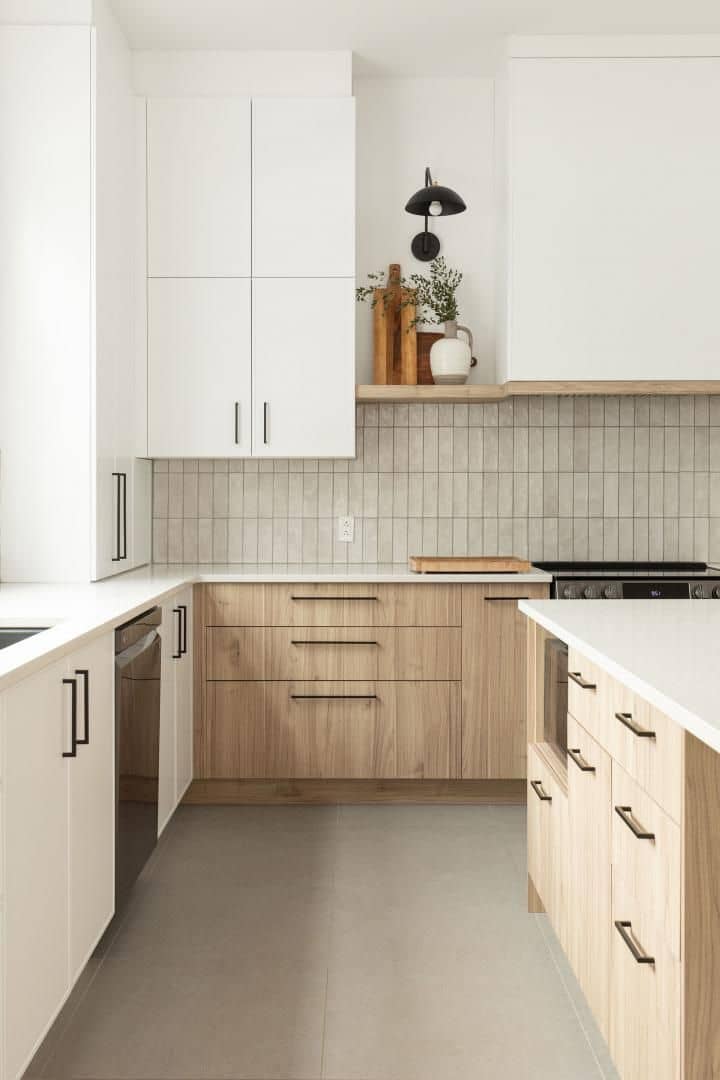
Kitchen Remodel vs Renovation: Which Is Right For You (DUPLICATE)


